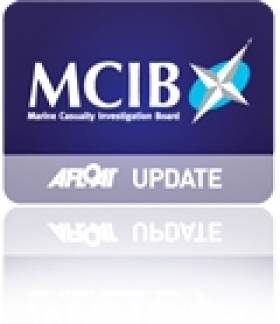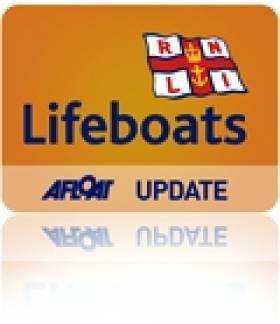Displaying items by tag: Lough Derg
Report Finds Emerald Star Line Cruiser Ran Aground on Rocks
The Marine Casualty investigation board has issued its Report of Investigation into the grounding and subsequent foundering of an Emerald Star Line Caprice 8, a Charter boat, The boat ran aground on rocks in the vicinity of Mountaineer Rock, off Ryan's Point on Lough Derg, Co. Tipperary last October 9th. The four persons on board were taken off by the Portumna Fire and Rescue RIB and ferried across the lake to Williamstown Harbour. The vessel was noted to have been severely holed. The vessel was pulled off the rocks and subsequently sank while under tow. There were no fatalities and no pollution associated with this incident. A copy of the report can be downloaded below.
Lake Lifeboat Goes on Show
Lough Derg RNLI Lifeboat Crew is inviting the public to visit the lifeboat station on their annual Open Day, next Saturday July 17th, from 11am until 3pm. The Lifeboat Station is located on the grounds of Lough Derg Yacht Club in Dromineer. More from Eleanor Hooker, the lake lifeboat PR here:
History of the RNLI Station at Dromineer
On May 25 2004, following a year of intensive training on the water and in the classroom, Lough Derg RNLI Lifeboat Station began full time service. The first shout came during the crew's initial training in April 2004, when a cruiser went on the rocks in Church Bay, on the County Clare shore. To date the lifeboat has launched on over one hundred and fifty shouts. Most launches have been to assist vessels that have grounded or have suffered engine failure. A majority of the call-outs have been following requests to launch from the Coast Guard based in Valentia. The lifeboat covers the entire lake; from Portumna Bridge at the northern end of the lake to Killaloe on the southern end and downstream to Parteen Weir. The lifeboat is on-call 24hrs a day, 365 days a year. The first Atlantic B class lifleboat based at the station was Clothworker, which has since been replaced by the Altalntic 74 Vera Skilton.
There has always been an RNLI fundraising branch based in Nenagh, long before the lifeboat station was set up. The local fundraising committee and the lifeboat station crew and committee work closely together to raise awareness of the activities and crucially the costs of running a lifeboat station; the lifeboat depends entirely on public donations and legacies for its income. The RNLI lifeboat also enjoys a great working relationship with other rescues services on and off the water.
The volunteer crew train twice a week, in the classroom on Wednesday evenings and on the water on Sunday mornings. Apart from the three newest recruits, all crew have been on a crew training or helmsman course at the Lifeboat College at Poole on the south coast of England. Ruth Spillane travels to Poole later this month to complete her Crew Training Course.
On June 8 2006 at the official opening of the new headquarters of RNLI Ireland in Swords, President McAleese made the following comments about the RNLI lifeboat service and her volunteer crews;
There are approximately 1,000 volunteer lifeboat crew members in Ireland, including 80 women, most of whom are not from professional maritime backgrounds. This organisation is a classic example of the phenomenal, unselfish, generous voluntary endeavour in literally thousands of spheres that goes on in Ireland around the clock, week in and week out, year in and year out without thought of thanks or recognition. There isn't in any of it the remotest trace of exhibitionism or grandstanding. There is not in any of it an easy option, a lazy cynicism. Here you will find authenticity, integrity, humility, spontaneous goodness and in this organisation in particular, you will find men and women who are prepared to risk their lives at any moment for people who may be complete strangers and even occasionally complete fools.
I have been privileged to see at first hand the dedication and commitment of our lifeboat crews. I know how much of themselves they invest in training and how much time is invested in finding the resources to keep the levels of skill, equipment and services at the highest level possible. If there is fear you don't look for an easy out, if there is discomfort you do not complain, if there is danger you face it. And by some miracle you get a deep personal fulfilment from all this giving which keeps you involved, keeps you faithful to the RNLI often over a lifetime.
We take pride too in the fact that RNLI Ireland operates on an all–island basis, transcending all the vanities of jurisdictional issues to ensure that the sea which is no respecter of man-made boundaries is tackled with the best will that can be harnessed, not just on this island, but in this region of Europe.
We hope that as many of the public can attend the Open Day next Saturday to meet crew and members of the operations team. Dromineer will be a busy colourful place as over sixty boats (always dressed brightly for the event) taking part in the Lough Derg rally will be coming into the public harbour and in Lough Derg Yacht Club the Shannon-one Design dinghies will be taking to the water for a day of racing.
























